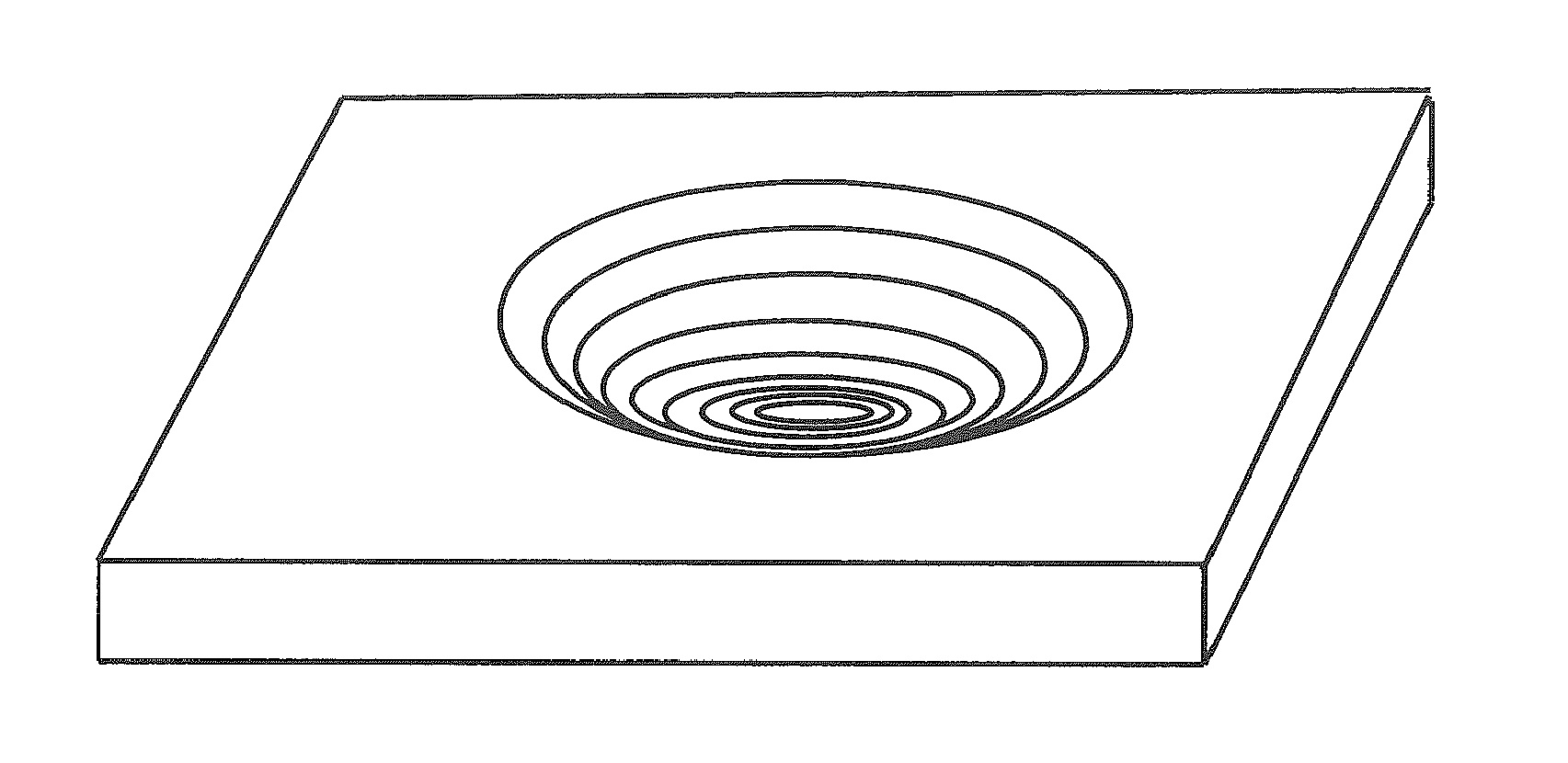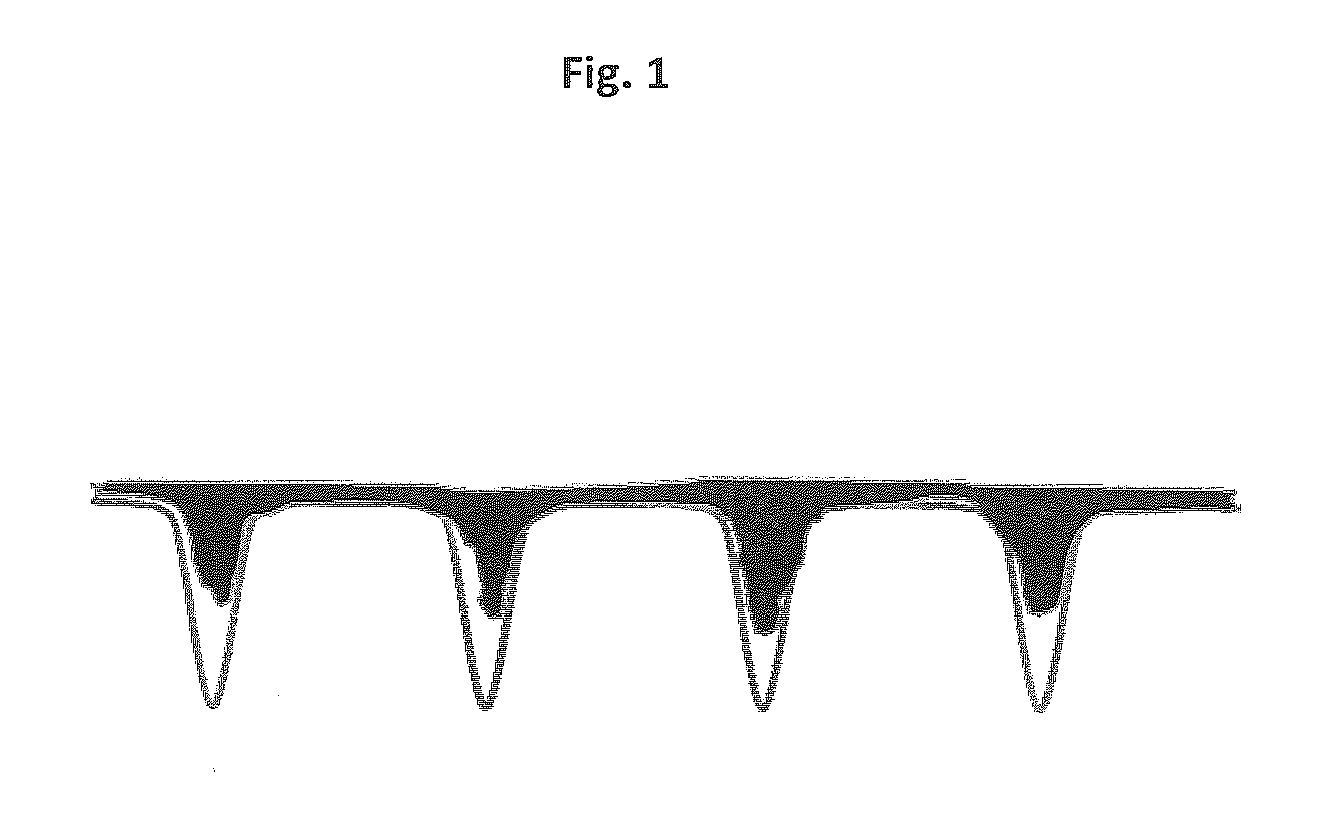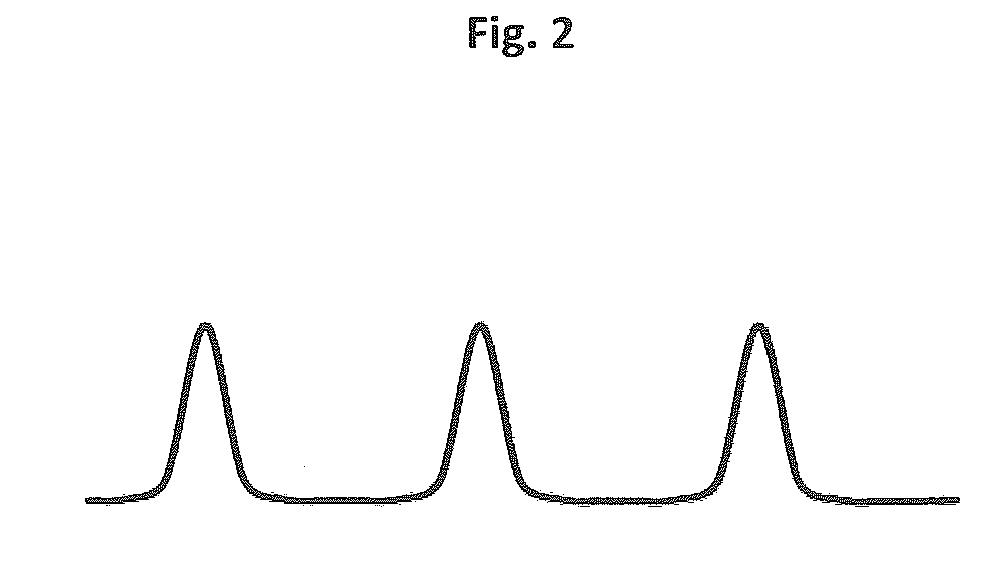Vitro measurement of sunscreen protection
a technology of sunscreen protection and vitroskin, which is applied in the field of in vitro sunscreen protection measurement, can solve the problems of vitroskin®, overestimating the actual spf protection realized in sunlight, and inability to replicate the thickness distribution of sunscreen on the skin
- Summary
- Abstract
- Description
- Claims
- Application Information
AI Technical Summary
Benefits of technology
Problems solved by technology
Method used
Image
Examples
example 1
[0057]A schematic of a thickness profile of a sunscreen on human skin is shown in FIG. 2. The sunscreen film thicknesses may be grouped within defined ranges as illustrated in FIG. 3.
[0058]Once a grouping of thicknesses within arbitrary ranges is achieved, a substrate may be designed that permits replication of sunscreen film thicknesses and their distribution on human skin, and the application amount of 2 mg / cm2, as illustrated in FIG. 4. The area of substrate that contains the sunscreen is then irradiated continuously or intermittently with a uniform bean, and the applied and transmitted UVR doses are monitored to determine the UVR dose required for the film to transmit one MED. The value of the latter is the product SPF.
[0059]Two non-limiting representations of useful substrates are depicted in FIGS. 5-7. The substrate will be fabricated of adequately translucent materials such as quartz, PMMA, and biological films with properties that resemble skin. The latter should provide mor...
PUM
| Property | Measurement | Unit |
|---|---|---|
| height | aaaaa | aaaaa |
| depths | aaaaa | aaaaa |
| depths | aaaaa | aaaaa |
Abstract
Description
Claims
Application Information
 Login to View More
Login to View More - R&D
- Intellectual Property
- Life Sciences
- Materials
- Tech Scout
- Unparalleled Data Quality
- Higher Quality Content
- 60% Fewer Hallucinations
Browse by: Latest US Patents, China's latest patents, Technical Efficacy Thesaurus, Application Domain, Technology Topic, Popular Technical Reports.
© 2025 PatSnap. All rights reserved.Legal|Privacy policy|Modern Slavery Act Transparency Statement|Sitemap|About US| Contact US: help@patsnap.com



